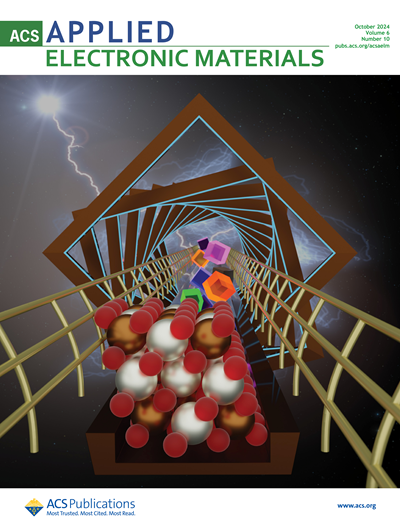毛细管吸附在 Heliamphora minor-Mimicking Mesoscopic Trichomes Array 上
IF 4.7
3区 材料科学
Q1 ENGINEERING, ELECTRICAL & ELECTRONIC
引用次数: 0
摘要
液体会自发地在粗糙的冻干表面上扩散,这种扩散是由毛细管驱动的,被定义为毛细管吸附。有关微纹理表面的大量研究已应用于微流控及其相应的制造。然而,由于缺乏制造技术,人们很少研究中尺度粗糙度的吸水现象。受南美投手植物 Heliamphora minor(其短柔毛内壁吸水以达到润滑和排水的目的)的启发,我们采用三维打印技术制造了一个模拟中观毛状体阵列,并研究了高通量毛细管吸水过程。与微纹理表面上厚度均匀的攀缘膜不同,毫米长、亚毫米间距的毛状体的间隔填充形成了厚度不均匀的薄膜。与在微纹理表面上主导扩散的粘性耗散不同,我们揭示了一个由惯性主导的过渡机制,该机制具有介观吸水动力学,并构建了一个缩放定律,即在各种条件下,高度增长为时间的 2/3 倍。最后,我们研究了非均匀厚膜内部的质量运输,模拟了植物营养供给方法,并在薄膜中实现了开放系统虹吸,实验确定了通量饱和条件。这项工作探索了介观结构中的毛细管吸附,在低成本高通量开放式流体设计中具有潜在的应用价值。本文章由计算机程序翻译,如有差异,请以英文原文为准。
Capillary Wicking on Heliamphora minor-Mimicking Mesoscopic Trichomes Array
Liquid spontaneously spreads on rough lyophilic surfaces, and this is driven by capillarity and defined as capillary wicking. Extensive studies on microtextured surfaces have been applied to microfluidics and their corresponding manufacturing. However, the imbibition at mesoscale roughness has seldom been studied due to lacking fabrication techniques. Inspired by the South American pitcher plant Heliamphora minor, which wicks water on its pubescent inside wall for lubrication and drainage, we implemented 3D printing to fabricate a mimetic mesoscopic trichomes array and investigated the high-flux capillary wicking process. Unlike a uniformly thick climbing film on a microtextured surface, the interval filling of millimeter-long and submillimeter-pitched trichomes creates a film of non-uniform thickness. Different from the viscous dissipation that dominated the spreading on microtextured surfaces, we unveiled an inertia-dominated transition regime with mesoscopic wicking dynamics and constructed a scaling law such that the height grows to 2/3 the power of time for various conditions. Finally, we examined the mass transportation inside the non-uniformly thick film, mimicking a plant nutrition supply method, and realized an open system siphon in the film, with the flux saturation condition experimentally determined. This work explores capillary wicking in mesoscopic structures and has potential applications in the design of low-cost high-flux open fluidics.
求助全文
通过发布文献求助,成功后即可免费获取论文全文。
去求助
来源期刊

ACS Applied Electronic Materials
Multiple-
CiteScore
7.20
自引率
4.30%
发文量
567
期刊介绍:
ACS Applied Electronic Materials is an interdisciplinary journal publishing original research covering all aspects of electronic materials. The journal is devoted to reports of new and original experimental and theoretical research of an applied nature that integrate knowledge in the areas of materials science, engineering, optics, physics, and chemistry into important applications of electronic materials. Sample research topics that span the journal's scope are inorganic, organic, ionic and polymeric materials with properties that include conducting, semiconducting, superconducting, insulating, dielectric, magnetic, optoelectronic, piezoelectric, ferroelectric and thermoelectric.
Indexed/Abstracted:
Web of Science SCIE
Scopus
CAS
INSPEC
Portico
 求助内容:
求助内容: 应助结果提醒方式:
应助结果提醒方式:


